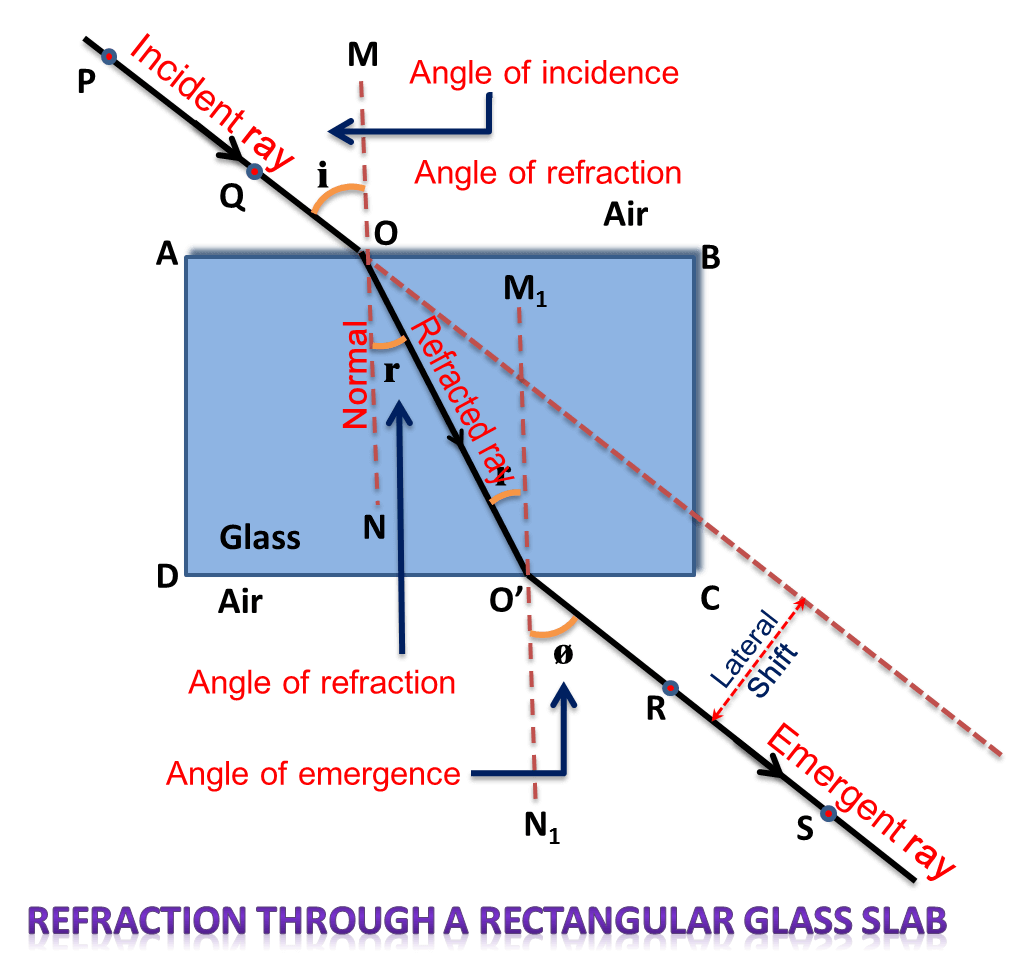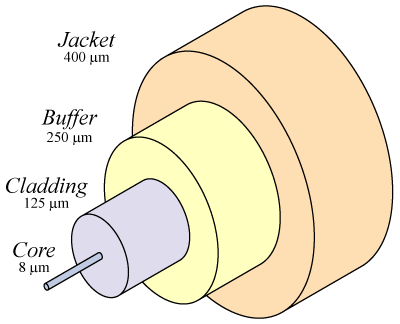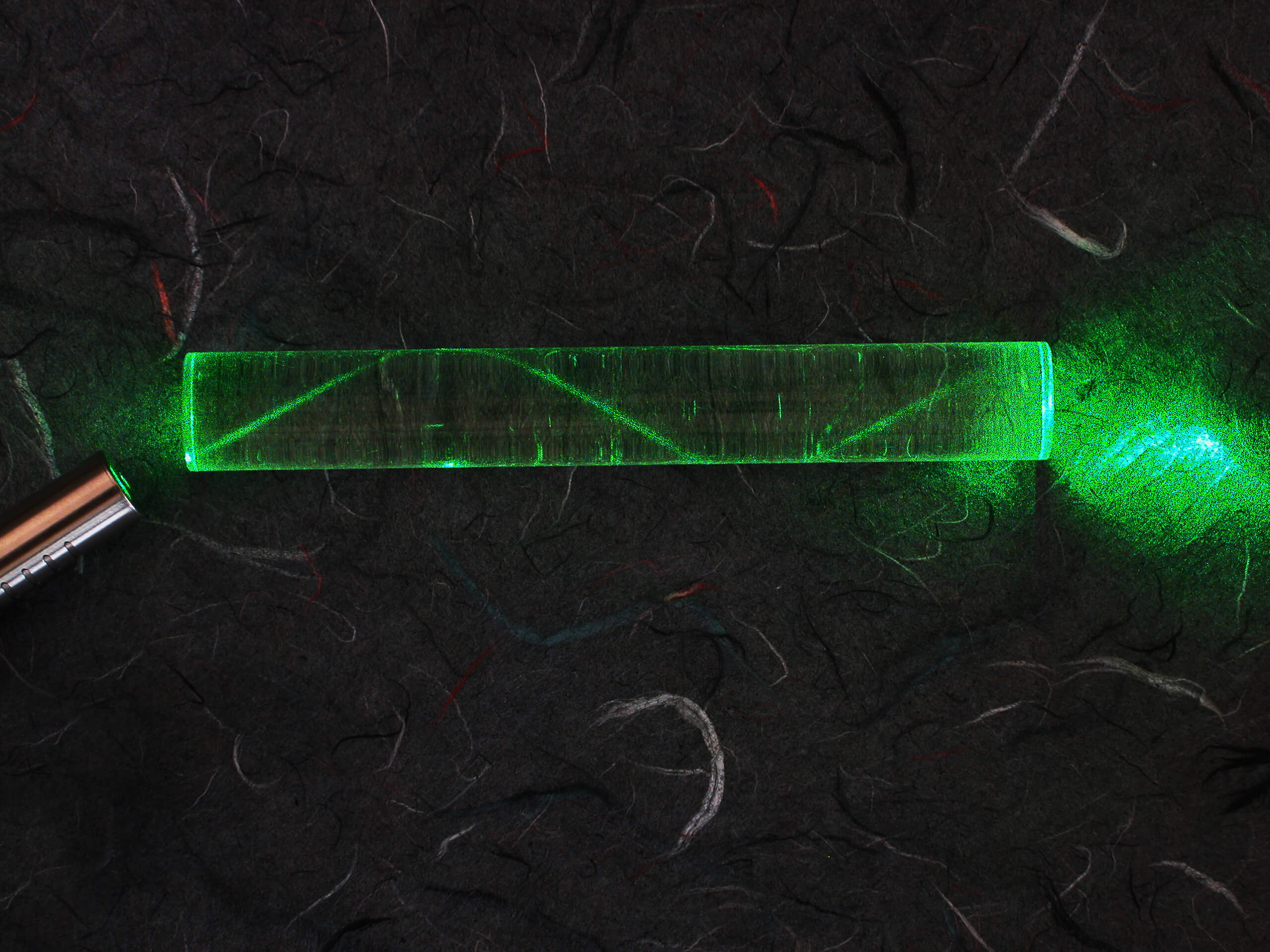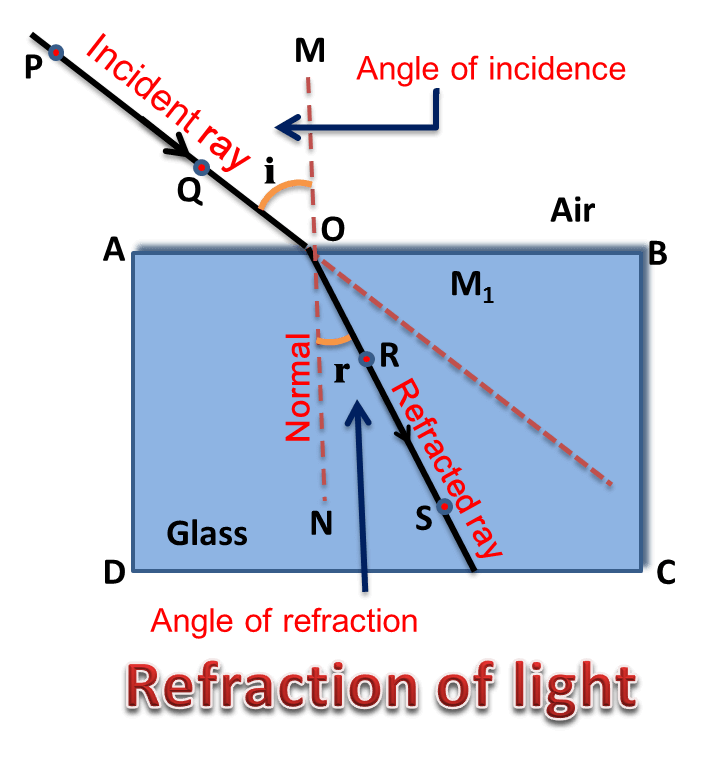Concept of Refraction of light
Reflection and Refraction are two of the very basic concepts in Optics chapter. In this article, we will learn about one of them – Refraction. We will also study about a related concept of Total Internal Reflection.
 Table of Contents
Table of Contents- What is Refraction?
- Total Internal Reflection
What is Refraction?
When a light ray passes from one medium to another, it bends a bit (some of it gets reflected too). This phenomenon of bending of light is called refraction.


Now, let’s learn about some of the laws of refraction.
Laws of Refraction
These laws of refraction were experimentally determined by Snell. These are:
- The incident ray, the refracted ray, as well as the normal to the interface at the point of incidence, lie in the same plane.
- The ratio of the sine of the angle of incidence to the sine of angle of refraction is constant.
Refractive Index and Snell’s law of refraction
Refractive Index
Refractive Index is a concept related to every medium through which light can pass.
It is the ratio of speed of light in vacuum (c) to the speed of light in a medium (v). It is represented by the symbol μ or n.
So, Refractive index of a medium (μ) = c/v
Of course, it is constant for any given medium.
The above formula gives us the absolute refractive index of a medium with respect to vacuum. But we can also find out refractive index of a medium with respect to another medium.
Snell’s law of refraction
Say, we have two mediums 1 and 2, then:
Refractive index of the second medium with respect to the first medium, = sin i / sin r
Here, i is the angles of incidence (angle that the incident ray makes with the normal), and r is the angle of refraction (angle that the refracted ray makes with the normal)
Of course, this ratio is also a constant for any two given mediums.
 Note
Noteis a characteristic of the pair of media (it also depends on the wavelength of light). However, it is independent of the angle of incidence.
 Note
NoteKindly note that, when:
light passes from a rarer medium to a denser medium, it bends towards the normal at the point of incidence.
light passes from a denser medium to a rarer medium, it bends away from the normal.
 Note
NoteWhen a ray of light moves from one medium to another, you will note that:
- its wavelength and velocity change.
- its frequency and phase do not change.
Examples of Refraction
Now, let’s list down some of the real-life examples wherein we see refraction in action.
Atmospheric refraction: Refraction even happens in our atmosphere. That’s because density of earth’s atmosphere decreases with altitude, which effectively causes formation of multiple mediums/layers of different density and refractive index. The sunlight passes through these different layers of different refractive index, gets refracted again and again and therefore follows a curved path. This is what causes the twinkling of stars and oval shape of the sun in the morning and evening.
Atmospheric refraction also elongates the visibility of the sun in the sky. Due to atmospheric refraction, the sun is visible a little before the actual sunrise and until a little after the actual sunset.
When we partially dip a linear object in liquid (inclined to the surface of the liquid), it looks bended. You must have observed this with water.

Any object (e.g. coin, eraser, pencil, etc.) at the base of a vessels filled with water appears raised.
Total Internal Reflection
Before we learn about total internal reflection, we need to understand what internal reflection is.
What is Internal Reflection?
When light travels from an optically denser (first) medium to a rarer (second) medium, then:
- a part of it is refracted (to the second medium) at the interface.
- a part of it is reflected (back into the first medium) at the interface. This reflection is called internal reflection.
What is Total Internal Reflection?
If we keep on increasing the angle of incidence in the denser medium, then angle of refraction in the rarer medium also keeps on increasing.
The angle of incidence at which the angle of refraction becomes 90°, is called critical angle (C).
If we now further increase the angle of incidence (so that it is more than critical angle), then the light incident on the boundary is reflected back in the denser medium. This is total internal reflection.
So, for total internal reflection to happen, two conditions need to be met:
- Total Internal Reflection occurs only when light ray travels/propagates from a denser medium to a rarer medium.
- Angle of incidence in the denser medium, must exceed the critical angle.
 Reflection Vs. Total Internal Reflection
Reflection Vs. Total Internal ReflectionIn normal reflection, generally some part of the light gets transmitted, i.e. the light ray being reflected is always less intense than the incident ray (no matter how shiny or smooth the reflecting surface is).
However, in case of total internal reflection no transmission of light takes place. So, the reflected ray is as intense as the original ray.
Examples of Total Internal Reflection
Now, let’s list down some of the real-life examples wherein we see total internal reflection in action.
Mirage: It is an optical illusion of water that occurs in desert in a hot summer day. During the day (especially in summer time) in desert, the ground is very hot and so are the layers of air near the earth surface. Hot air is less dense. The layers of air further away from the earth surface are relatively cooler, and hence denser. When the ray of light from a tree or a cloud moves towards the earth, it gradually moves away from the normal. When angle of incidence becomes greater than critical angle, total internal reflection takes place (i.e. light rays are reflected back upwards). When such rays are seen by a traveler in the desert, he sees an inverted image of a tree on the ground. This makes him think that there must be water on the ground.
Diamond and bubbles in water also shine because of repeated total internal reflections.

Optical fibers: They work on the principle of total internal reflection. Optical fibers are used in telecommunication and networking, as they can carry many signals (using different wavelengths of light). Optical fibers are also used in surgical procedures, such as endoscopy (pipes with camera are inserted inside a patient’s body). They are even used for decorative purposes, such as decorative table lamps.
 Functioning of Optical Fibers in more detail
Functioning of Optical Fibers in more detailOptical fiber has two major parts:
inner part is a glass core of higher refractive index.
the outer part (cladding) is a glass of lower refractive index, which surrounds the inner core. (Both these layers of glasses are covered by a plastic cover, called jacket.)

When light inside the core moves towards the outer layer, total internal reflection takes place, and the light signal is again reflected back towards the core.

This happens again and again, without weakening the light signal. So, light signal in an optical fiber can propagate large distances without losing much intensity.




